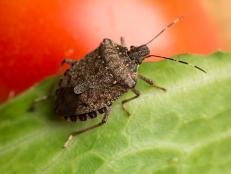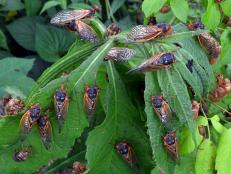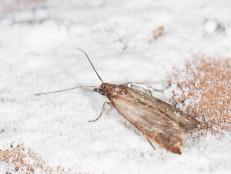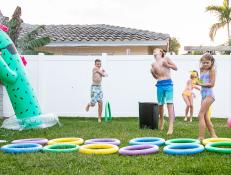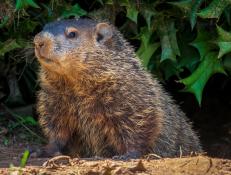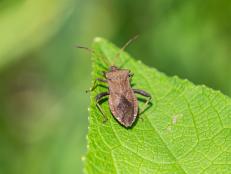Stink Bugs in the Garden
Because the stink bug releases its unpleasant scent when crushed, drowning may be preferred to squashing.


Image courtesy of Bob Hammon
Stink bug is the name given to a family of insects known for emitting a foul odor as a defense mechanism when facing predators. Broad bodied and shield-shaped, most stink bugs are herbivores, feeding on shrubs, vines, ornamental trees and numerous cultivated crops. They pierce the tissue of plants extracting the juices with sucking mouthparts. Damage is inflicted to plants through feeding, but also by transmission of yeast-spot disease, which can severely reduce crop yield. Active throughout the growing season, stink bug infestations escalate easily in the absence of predators interested in this foul-tasting insect.
Overwintering as adults in dead leaves or under tree bark, stink bugs emerge in the spring when temperatures reach between 60 and 70 degrees, depending on type. Producing two to four generations per season, by June the female stink bug will have laid hundreds of barrel-shaped eggs on long grass or weeds or one the leaves or stems of host plants. Once the eggs hatch, they will complete five stages of development, molting several times before developing wings as adults, at about five weeks.
Although they are not indigenous to North America, stink bugs have grown to be a common problem throughout the United States. The green stink bug is most often found in southern states and the northeast has faced a growing problem with the brown marmorated stink bug, which was introduced from China sometime around 2001. Issues with stink bug infestations emerge beyond the garden as these noxious bugs find their way into homes. Attracted to light or seeking warm spaces in which to overwinter, physical damage inside the home is rarely a problem, but the odors they emit make them an especially unwelcome guest.
Before stink bugs become a problem in the garden, non-invasive measures can be taken to prevent infestations from developing. Keep lawns mowed and remove all weeds in and around garden plots and nearby structures to discourage the laying of eggs. Cultural consideration is especially important in early spring, but should be maintained throughout the growing season. Clear leaves and lawn debris in the fall to prevent adult stink bugs from overwintering.
When stink bugs appear, hand picking before a widespread infestation is established will disrupt the reproductive cycle, reducing population growth. Because stink bugs release its unpleasant scent when crushed, drowning them may be preferred to squashing.
Spraying plants with soapy water is a practical method of controlling a stink bug infestation. When a stink bug becomes coated with soap, surface membranes of the exoskeleton are impaired, causing them to drown easily in the spray.
Although some insecticides are effective for stink bug management, those currently available are toxic and may pose risks to pets and children and also impact many beneficial insects. Using pesticides to control a stink bug infestation is not recommended in most cases. The long term impact of broad spectrum pesticides on an integrated pest management strategy can be severe and may cause more problems than it resolves.







